Dec 20, 2022
Hatsumode in Kobe – Shrines to Visit for New Years
Japan only started celebrating the New Year on January 1st, 1873, when the country adopted the Gregorian calendar of the West. Traditionally, the Japanese New Year was the same as the Chinese calendar. As this is a lunisolar calendar, New Year falls on a different date each year. Now, though, New Year in Japan is always January 1st. Most of the country shuts down for several days before and after this date.
The New Year celebration involves eating traditional food, like rice cakes and buckwheat noodles. At midnight, Buddhist temples ring their bells 108 times (107 before midnight and once in the new year) to represent the 108 worldly desires. People also send postcards to friends and relatives. However, the most important activity for many is the first Shinto shrine visit of the New Year, called hatsumōde.
Worshippers pilgrimage to a shrine to pray for good luck in the year. They also use the opportunity to buy good luck amulets, shift fortunes in their favor, and bring their old charms to be burned. Some shrines attract millions of visitors during the first three days of the New Year, which results in long lines of people waiting to enter.
There are a few top shrines to consider visiting in and around Kobe to experience this tradition.
Ikuta Shrine
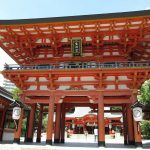
Ikuta Shrine is in the busy Sannomiya district, in the heart of Kobe. Erected in the 3rd century AD for Empress Jingu, it may be one of Japan’s oldest shrines.
Although small, Ikuta Shrine is one of the most popular places in the city for amulets. The shrine is a guardian of health, taking its name from the Chinese character meaning “life.” As good health is at the top of many wish lists for the coming year, Ikuta Shrine is a top destination for hatsumōde. The small duck pond at the shrine makes it particularly popular hatsumōde for couples — the significance being that some ducks mate for life.
1-2-1 Shimoyamatedori, Chuo Ward, Kobe (map link)
Open: 7:00 a.m. to 5:00 p.m.
Sumiyoshi Grand Shrine
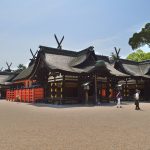 Sumiyoshi Grand Shrine is the principal shrine honoring the Sumiyoshi Sanjin — the sea and sailing gods. The shrine is worth visiting any time of year for its unique architectural features. However, it is best known for the crowds that pour into the Sumiyoshi Ward of Osaka for hatsumōde.
Sumiyoshi Grand Shrine is the principal shrine honoring the Sumiyoshi Sanjin — the sea and sailing gods. The shrine is worth visiting any time of year for its unique architectural features. However, it is best known for the crowds that pour into the Sumiyoshi Ward of Osaka for hatsumōde.
An estimated two million worshippers climb the steps to Sumiyoshi Taisha during the first couple of days of every new year. These visits are anything but a solemn occasion as vendors and food stands surround the shrine, and there’s plenty of entertainment for those waiting in line.
2-9-89 Sumiyoshi, Sumiyoshi Ward, Osaka (map link)
Open: 6:30 a.m. to 5:00 p.m.
Hirota Shrine
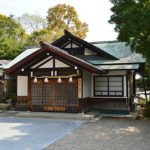 Hirota Shrine in Nishinomiya City is another place of worship built to honor Empress Jingu — one of three in total. It is also the only “grand shrine” in Hyogo prefecture. Here, the Hanshin Tigers players pray for victory and health before every baseball season. However, Hirota Shrine is best known for its azalea bushes, which bloom in the spring.
Hirota Shrine in Nishinomiya City is another place of worship built to honor Empress Jingu — one of three in total. It is also the only “grand shrine” in Hyogo prefecture. Here, the Hanshin Tigers players pray for victory and health before every baseball season. However, Hirota Shrine is best known for its azalea bushes, which bloom in the spring.
Hirota Shrine sees plenty of visitors at the beginning of the year. The devoted come on New Year’s Day to pick up fortunes written on paper strips. These are called omikuji and foretell great blessings or curses awaiting the recipient.
7-7 Taishacho, Nishinomiya, Hyogo (map link)
Open: 9:00 a.m. to 5:00 p.m.
Sumadera Temple
 If you’d rather visit a temple than a shrine, Sumadera Temple is a great option. Near the outskirts of the city, it’s away from the crowds. The temple dates back to the late 9th century. As well as being a religious place, it’s a memorial for the Genpei War between the Minamoto and Taira samurai clans. Within the temple complex is a treasure hall filled with artifacts from this period.
If you’d rather visit a temple than a shrine, Sumadera Temple is a great option. Near the outskirts of the city, it’s away from the crowds. The temple dates back to the late 9th century. As well as being a religious place, it’s a memorial for the Genpei War between the Minamoto and Taira samurai clans. Within the temple complex is a treasure hall filled with artifacts from this period.
Sumadera Temple is a superb place to spend New Year due to the nature that surrounds the complex. There are views of Kobe Bay and the Gempei War Garden, where you can continue learning about this period in Japanese history.
4-6-8 Sumaderacho, Suma Ward, Kobe (map link)
Open: 8:30 a.m. to 5:00 p.m.
Mayasan Tenjo-ji Temple
 Another temple to consider visiting is Mayasan Tenjō-Ji Temple. Located on Mount Maya, its name means “temple over the heavens.” The original temple was completed in 646 but burned to the ground in 1975. The new temple sits slightly higher up the mountain. It’s a peaceful place to go for hatsumōde as it’s free from the crowds you’ll experience at other shrines and temples.
Another temple to consider visiting is Mayasan Tenjō-Ji Temple. Located on Mount Maya, its name means “temple over the heavens.” The original temple was completed in 646 but burned to the ground in 1975. The new temple sits slightly higher up the mountain. It’s a peaceful place to go for hatsumōde as it’s free from the crowds you’ll experience at other shrines and temples.
2-12, Mayasancho, Nada Ward, Kobe (map link)
Open: 9:00 a.m. to 5:00 p.m.
Tosen Shrine
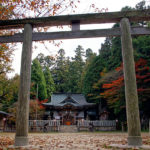 Tosen Shrine is dedicated to Sukunahikona, the deity associated with hot springs. The best day to visit for hatsumōde is January 2nd, as the shrine holds a small festival to bless the waters of nearby Arima Spa. You can even bathe at the onsen during your visit.
Tosen Shrine is dedicated to Sukunahikona, the deity associated with hot springs. The best day to visit for hatsumōde is January 2nd, as the shrine holds a small festival to bless the waters of nearby Arima Spa. You can even bathe at the onsen during your visit.
1908 Arimacho, Kita Ward, Kobe (map link)
Open: 8:30 a.m. to 5:00 p.m.
Sannomiya Shrine
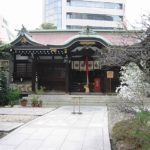 You’ve likely passed Sannomiya Shrine if you spend any time in downtown Kobe, although you may have ignored it until now due to its small size. Nonetheless, it is an interesting place to visit as it features vermillion torii gates, a cannon, and a Japanese zodiac chart. Plus, it’s particularly convenient for hatsumōde if you’re staying in downtown Kobe.
You’ve likely passed Sannomiya Shrine if you spend any time in downtown Kobe, although you may have ignored it until now due to its small size. Nonetheless, it is an interesting place to visit as it features vermillion torii gates, a cannon, and a Japanese zodiac chart. Plus, it’s particularly convenient for hatsumōde if you’re staying in downtown Kobe.
2-4-4 Sannomiyacho, Chuo Ward, Kobe (map link)
Open: 10:00 a.m. to 4:00 p.m.
Yuzuruha Shrine
 You’ll feel like you’ve left the city behind if you choose Yuzuruha Shrine for hatsumōde. Although it’s just five minutes from Mikage station, the shrine is designed to be a sacred forest. It’s a particularly popular place for soccer players and fans because Yatagarasu, a mythological three-legged crow symbolizing the Japanese football association, is enshrined here. There is also a monument in the shape of a soccer ball. People often pray to improve their soccer skills at the shrine.
You’ll feel like you’ve left the city behind if you choose Yuzuruha Shrine for hatsumōde. Although it’s just five minutes from Mikage station, the shrine is designed to be a sacred forest. It’s a particularly popular place for soccer players and fans because Yatagarasu, a mythological three-legged crow symbolizing the Japanese football association, is enshrined here. There is also a monument in the shape of a soccer ball. People often pray to improve their soccer skills at the shrine.
2-9-27 Mikagegunge, Higashinada Ward, Kobe (map link)
Open: 9:00 a.m. to 5:00 p.m.
Or
Alternatively, you could visit your favorite temple or shrine in Kobe. Virtually all of them have something for hatsumōde.
Image By: そらみみ (Own work) [CC BY-SA 3.0], via Wikimedia Commons
Image By: DVMG [CC BY 3.0], via Wikimedia Commons
Image By: Saigen Jiro [CC0]
Image By: I, KENPEI, CC BY-SA 3.0, via Wikimedia Commons
Image By: 663highland, CC BY-SA 3.0, via Wikimedia Commons
Image By: Nnn at Japanese Wikipedia, CC BY-SA 3.0, via Wikimedia Commons
Image By: spinachdip, CC BY-SA 2.0, via Wikimedia Commons
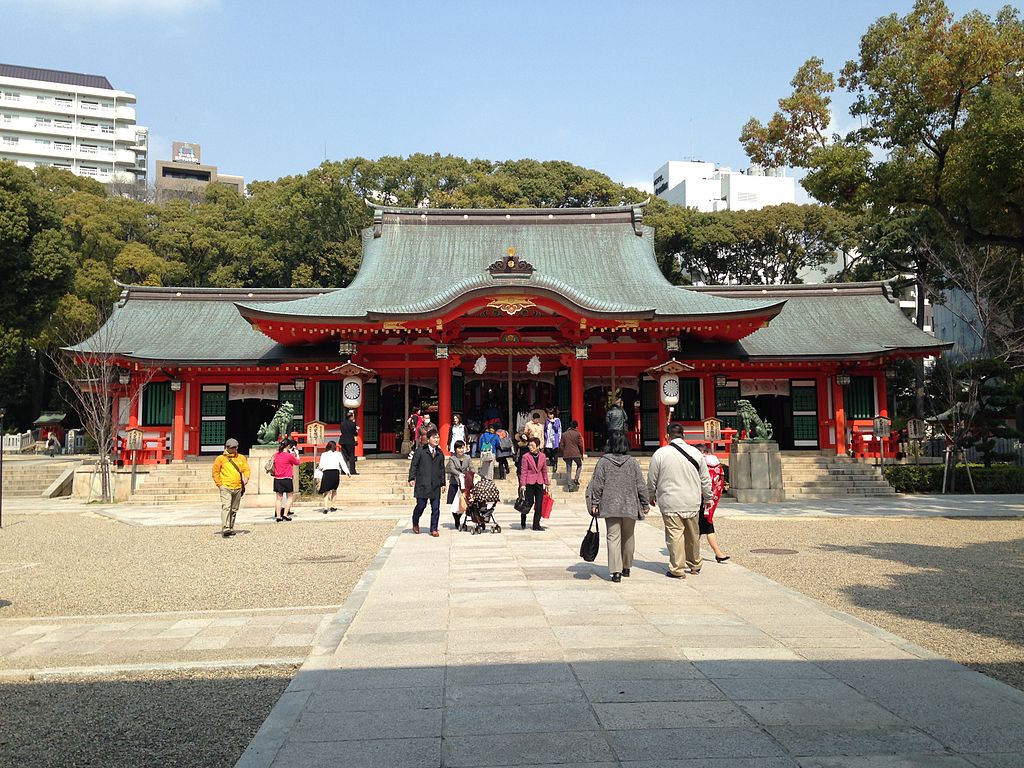

About the author